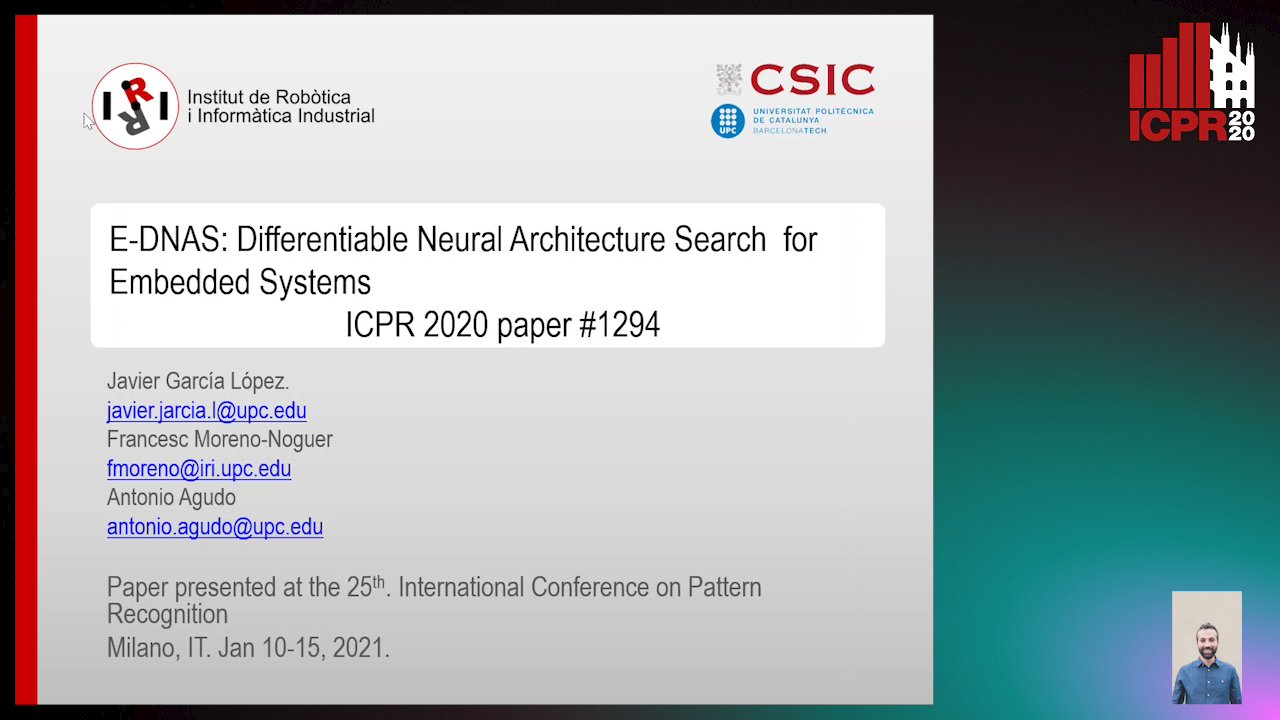Javier García López
Paper download is intended for registered attendees only, and is
subjected to the IEEE Copyright Policy. Any other use is strongly forbidden.
Papers from this author
E-DNAS: Differentiable Neural Architecture Search for Embedded Systems
Javier García López, Antonio Agudo, Francesc Moreno-Noguer

Auto-TLDR; E-DNAS: Differentiable Architecture Search for Light-Weight Networks for Image Classification
Abstract Slides Poster Similar
Designing optimal and light weight networks to fit in resource-limited platforms like mobiles, DSPs or GPUs is a challenging problem with a wide range of interesting applications, {\em e.g.} in embedded systems for autonomous driving. While most approaches are based on manual hyperparameter tuning, there exist a new line of research, the so-called NAS (Neural Architecture Search) methods, that aim to optimize several metrics during the design process, including memory requirements of the network, number of FLOPs, number of MACs (Multiply-ACcumulate operations) or inference latency. However, while NAS methods have shown very promising results, they are still significantly time and cost consuming. In this work we introduce E-DNAS, a differentiable architecture search method, which improves the efficiency of NAS methods in designing light-weight networks for the task of image classification. Concretely, E-DNAS computes, in a differentiable manner, the optimal size of a number of meta-kernels that capture patterns of the input data at different resolutions. We also leverage on the additive property of convolution operations to merge several kernels with different compatible sizes into a single one, reducing thus the number of operations and the time required to estimate the optimal configuration. We evaluate our approach on several datasets to perform classification. We report results in terms of the SoC (System on Chips) metric, typically used in the Texas Instruments TDA2x families for autonomous driving applications. The results show that our approach allows designing low latency architectures significantly faster than state-of-the-art.